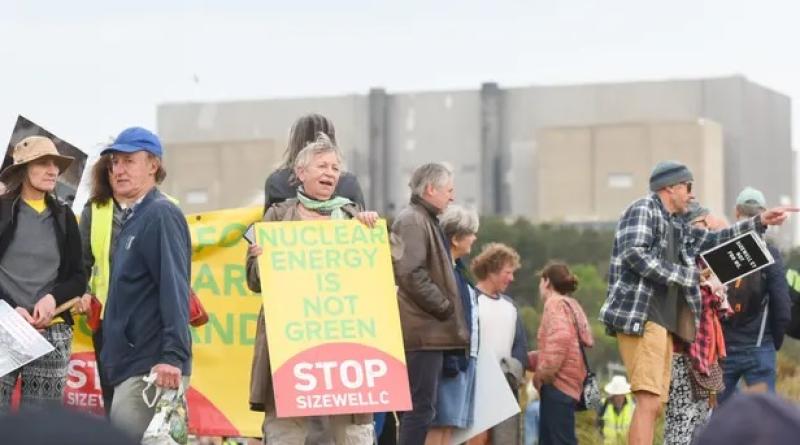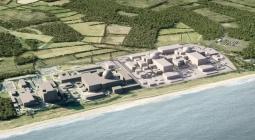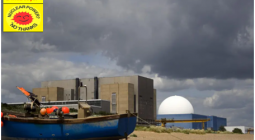Boris Johnson is poised to sign off as prime minister by giving the green light for a new nuclear reactor costing up to £30bn.
The decision to offer funding for the Sizewell C in Suffolk, in his final week in Downing Street, is expected to unlock significant private funding for the project after years bogged down in planning approvals. However, it would come after Johnson promised not to make any major spending decisions before leaving office. Here is the state of play.
What is Sizewell C?
The power station is planned to sit alongside the existing Sizewell B nuclear reactor on the Suffolk coast. When complete, it is estimated the 3.2 gigawatt plant will be capable of generating electricity for 6m homes for up to 60 years. Sizewell C is expected to plug a gap in Britain’s nuclear capabilities – most UK plants will be shut by 2030. Sizewell B is due to close in 2035, although its lifetime may be extended.
How is it going to be funded?
The plans were originally developed by France’s EDF, which holds an 80% stake in the project, and the Chinese state-backed nuclear power company CGN, which has a 20% holding. However, ministers are keen to avoid further Chinese involvement in UK nuclear sites amid worsening relations between Britain and China. CGN holds a stake in Hinkley Point C – the delayed and over-budget Somerset plant upon which plans for Sizewell are based. The UK government and EDF are expected to each take a 20% stake, while bankers at Barclays have been tasked by officials with finding investors for the remainder. Pension and infrastructure specialist funds are seen as the most probable candidates to invest.
How much will it cost?
Estimates have crept up from £20bn to a current range of £20bn to £30bn. The government will make a final decision on how much taxpayer funds will be put in – thought to be around £6bn – next year. Ministers have already committed £100m to the project and plan to use a so-called “regulated asset base” funding model.
RAB funding gives investors a set return during the construction phase of a project, reducing their risk to encourage their involvement in vital infrastructure deals. However, it shifts the risk of delays and extra costs on to taxpayers.
The Department for Business, Energy and Industrial Strategy has estimated that taxpayer backing will add an extra £1 a month to household bills.
However, research by the University of Greenwich business school seen by the Guardian shows the average monthly cost could reach £2.12, or £25.40 a year. The average estimate in the study put the combined cost at £35bn, or £2.3bn a year.
When will it be built?
The site is a crucial pillar in Johnson’s plan to green-light eight new nuclear reactors over the next eight years. However, the approval process has suffered multiple delays. The progress of Hinkley Point C – which earlier this year pushed back its opening to June 2027, a decade later than planned – has not provided an encouraging blueprint.
The University of Greenwich forecasts predict it will take 15 years to build Sizewell C, or 17 years under its gloomiest forecast, and cost £43.8bn.
Greg Clark, the levelling up secretary, this week unveiled proposals designed to speed up the approval of nuclear power stations and off-shore windfarms. The fast-track process will also be applied to major roads and airport runways.
What are the objections against Sizewell C?
The project has faced opposition on several fronts from critics who say nuclear projects are too slow to build and costly, as well as those concerned over safety and nuclear waste. Campaigners question the track record of the pressurised water reactor proposed for the site and the cost to consumers. Opponents also worry whether local infrastructure is capable of handling a site that could bring 6,000 workers to the area and thousands of extra vehicles. The threat to water supplies in an area officially designated as seriously water stressed and risk of coastal erosion and flooding have also been raised.
What happens next?
A final decision is expected from the government on the project next year. With Johnson’s decision before his departure, the situation has echoes of Hinkley Point C, when Theresa May put the project on hold in 2016 in her first weeks as prime minister amid security concerns. May eventually approved the project and, if Liz Truss is successful in the Tory leadership race, her rumoured chancellor, Kwasi Kwarteng, is understood to be supportive of Sizewell C.
However, the process may also be held up by a legal challenge by the Together Against Sizewell C campaign, over planning consent for the plant, which was given against the advice of the independent Planning Inspectorate in July.





